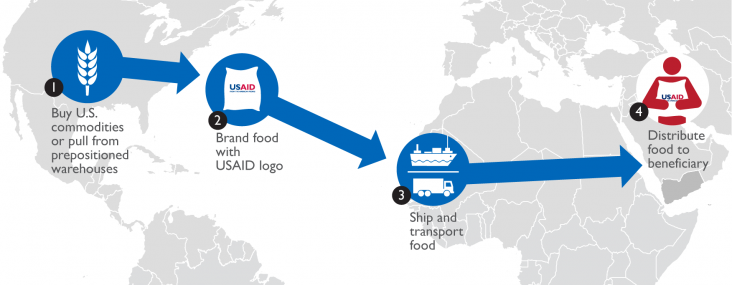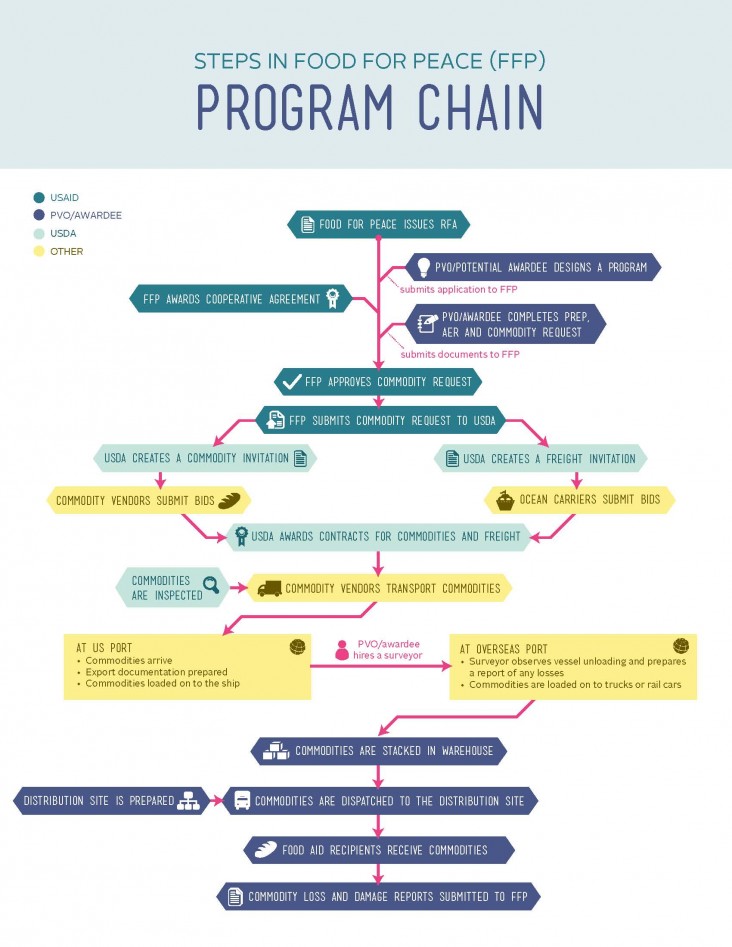- What We Do
- Agriculture and Food Security
- Democracy, Human Rights and Governance
- Economic Growth and Trade
- Education
- Environment and Global Climate Change
- Gender Equality and Women's Empowerment
- Global Health
- Humanitarian Assistance
- Transformation at USAID
- Water and Sanitation
- Working in Crises and Conflict
- U.S. Global Development Lab
Speeches Shim
USAID partners to enhance the nutrition and overall quality of the U.S. food aid basket, and improve food assistance programming and procurement processes for the implementation of food assistance activities. Many product, programming and process updates are based on recommendations from the Food Aid Quality Review (FAQR), an ongoing stakeholder consultation process that expands the body of scientific and programmatic evidence and helps drive continuous improvements in programming and procurement.

Programming
The Food Aid Product Information Guide contains a summary of typical programming and uses for each food aid product in emergency and development settings.
Examples of Food Assistance in Emergency Settings:
- General food distribution to households.
- Targeted nutrition rations based on nutritional needs.
- Food for Assets, Food for Education, Food for Training, Vulnerable Group Feeding, and Food for Work programs in longer-term emergencies.
Examples of Food Assistance in Development Settings:
- Targeted and household rations in programs with an explicit nutritional purpose, including prevention and treatment of acute malnutrition and prevention of chronic malnutrition using the first 1,000 days approach.
- Food for Assets, Food for Education, Food for Training, Vulnerable Group Feeding, and Food for Work programs.
Procurement Process
The food aid product procurement process and steps are shown below:

For food aid product requirements and specifications, refer to the Food Aid Product Information Guide which includes links to USDA Commodity Requirements Documents (CRDs) and Commercial Item Descriptions (CIDs). USAID uses the Web-Based Supply Chain Management system (WBSCM), which includes relevant WBSCM codes for food aid products.
For select food commodity products, there are USAID specifications:

Comment
Make a general inquiry or suggest an improvement.